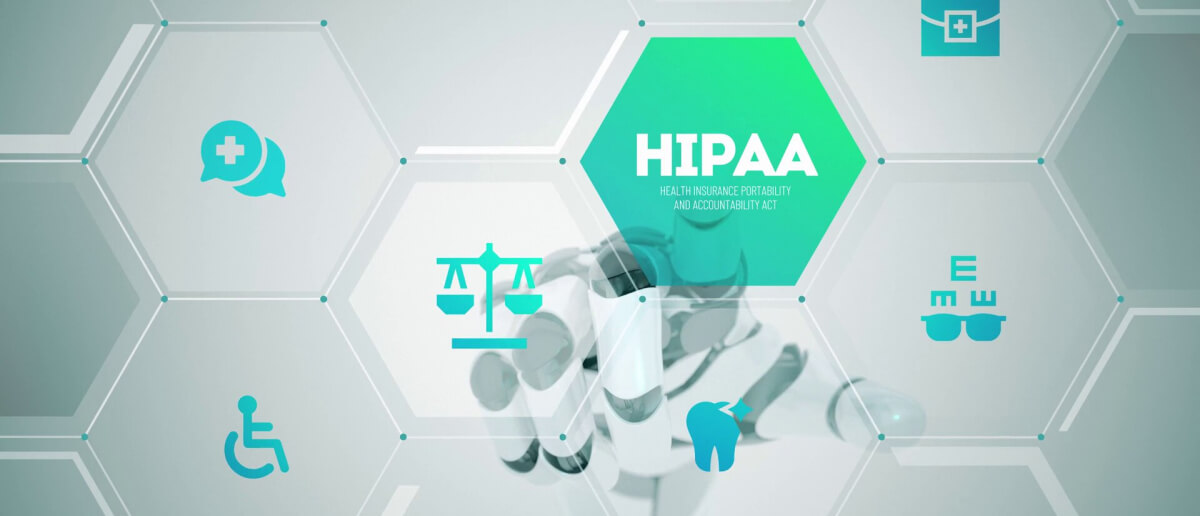
December 9 2023
8 min read

Jul
In the current healthcare landscape, telemedicine has become essential, connecting patients and healthcare providers through remote consultations and virtual care. As telemedicine usage grows, complying with HIPAA becomes crucial. This article explores the importance of HIPAA compliance in white label telemedicine solutions and its role in safeguarding patient data and privacy.
Telemedicine has transformed healthcare services, offering patients easy access to medical consultations and remote treatments. However, digitizing healthcare also brings risks, emphasizing the importance of complying with HIPAA guidelines.
Telemedicine providers prioritize patient information protection and data confidentiality by following HIPAA regulations. Compliance reduces the risk of data breaches and upholds patients’ fundamental rights to privacy and security.
Healthcare providers are considering secure telemedicine solutions, and white label telemedicine platforms offer a practical choice. With a white label solution, organizations can customize and brand telemedicine software without starting from scratch.
White label telemedicine solutions provide many advantages for HIPAA compliance. Partnering with reliable providers gives healthcare organizations access to pre-built infrastructure designed to meet HIPAA standards. This allows healthcare professionals to focus on quality care while leaving compliance tasks to the experts.

The Health Insurance Portability and Accountability Act (HIPAA) serves as the foundation for safeguarding sensitive health data and maintaining patients’ rights to control their medical records.
Enacted in 1996, HIPAA is a comprehensive federal law designed to establish standards for protecting the confidentiality, integrity, and availability of electronic health information. The Act is divided into several titles, with Title II, also known as the Administrative Simplification (AS) provisions, being particularly relevant to healthcare providers and entities involved in telemedicine.
The primary objectives of HIPAA’s AS provisions are to:
Under HIPAA, healthcare organizations must implement technical, physical, and administrative safeguards to protect patient data from unauthorized access, use, or disclosure.
HIPAA compliance in telemedicine involves adhering to specific rules and requirements laid out in the Act. These rules are essential for ensuring the secure transmission of patient information and maintaining the confidentiality of telehealth services.
Privacy Rule
The HIPAA Privacy Rule sets the standards for safeguarding patients’ protected health information (PHI). PHI includes any health information that can be linked to an individual, such as names, addresses, dates of birth, and medical records. Healthcare providers engaged in telemedicine must obtain patient consent for the use and disclosure of PHI, ensuring that patients have control over their health data.
Security Rule
The HIPAA Security Rule outlines the administrative, physical, and technical safeguards that covered entities must implement to protect electronic PHI (ePHI). Healthcare organizations utilizing telemedicine technologies must implement measures such as data encryption, access controls, and risk assessments to safeguard ePHI from unauthorized access and breaches.
Breach Notification Rule
The HIPAA Breach Notification Rule requires covered entities to notify affected individuals, the Department of Health and Human Services (HHS), and, in some cases, the media, in the event of a data breach involving unsecured PHI. This rule underscores the significance of promptly addressing and reporting any security incidents to protect patient privacy.
Omnibus Rule
The HIPAA Omnibus Rule , introduced in 2013, further strengthened privacy and security protections for patients’ PHI. It expanded the responsibilities of business associates, holding them equally accountable for compliance with HIPAA regulations. Healthcare organizations partnering with vendors for telemedicine solutions must ensure these vendors are HIPAA-compliant and adhere to the Omnibus Rule.

While telemedicine offers numerous advantages, it also presents unique challenges for healthcare providers striving to maintain HIPAA compliance. Identifying and addressing these challenges is crucial to ensure the secure and ethical delivery of telemedicine services.
Telemedicine introduces new avenues for potential risks and security breaches, making it imperative for healthcare organizations to proactively address these concerns. Some of the key risks and security challenges in telemedicine include:
Data Breaches: The transmission of patient data through digital channels creates vulnerabilities that cybercriminals may exploit, leading to data breaches and unauthorized access.
Cyber Attacks: Healthcare organizations may be targeted by sophisticated cyber attacks, such as ransomware, malware, and phishing attempts, compromising patient data and disrupting services.
Device Security: The use of personal devices, such as smartphones and tablets, for telemedicine consultations requires robust security measures to protect patient information.
Third-Party Risks: Collaborating with third-party vendors introduces potential risks if they do not uphold the same level of security and compliance standards.
Inadequate Authentication: Weak authentication measures may lead to unauthorized access to telemedicine platforms, jeopardizing patient privacy.
Lack of Telemedicine Policies: Inadequate or unclear telemedicine policies may result in misunderstandings and mismanagement of patient data.
Maintaining HIPAA compliance in the rapidly evolving landscape of telemedicine can be challenging. Some common pitfalls to watch out for include:
Insufficient Training: Lack of proper training for healthcare professionals on telemedicine best practices and HIPAA requirements may lead to unintentional compliance violations.
Non-compliant Technology: Failing to choose a HIPAA-compliant telemedicine platform or not properly configuring the technology can put patient data at risk.
Inadequate Risk Assessment: Neglecting to conduct regular risk assessments to identify potential vulnerabilities and address them in a timely manner.
Limited Patient Education: Patients need to be informed about their rights and responsibilities concerning telemedicine and their PHI.Failure to Update Policies: As technology and regulations evolve, it is crucial to keep telemedicine policies and procedures up to date.

The consequences of non-compliance with HIPAA regulations can be severe for healthcare organizations. Apart from potential legal and financial penalties, the impact of non-compliance includes:
Damage to Reputation: Data breaches and non-compliance incidents can severely damage the reputation and trust of the healthcare organization.
Loss of Patients: Patients are increasingly conscious about data privacy, and a breach can lead to patients seeking alternative healthcare providers.
Legal Consequences: Non-compliance may result in legal actions, fines, and investigations, which can be financially draining for the organization.
Operational Disruptions: Addressing compliance violations may divert resources and disrupt regular operations, affecting patient care.

With the growing demand for telemedicine, healthcare providers are looking for solutions that meet regulatory requirements and offer easy integration and customization. White label telemedicine solutions step in to fulfill these needs, providing various benefits for HIPAA compliance and improving telehealth services.
White label telemedicine platforms prioritize secure data transmission, employing encryption protocols to safeguard patient information during communication between healthcare professionals and patients.
To maintain HIPAA compliance, white label telemedicine solutions establish encrypted communication channels, ensuring that all data transmitted is protected from unauthorized access.
HIPAA compliance requires strict access controls and user authentication mechanisms. White label telemedicine platforms implement these features, allowing healthcare organizations to manage user roles and access permissions effectively.
Telemedicine is quickly advancing due to technology and the demand for accessible healthcare. Embracing white label telemedicine solutions and maintaining HIPAA compliance offers healthcare providers opportunities to expand, improve outcomes, and revolutionize healthcare. Prioritizing data security and patient privacy enables a transformative journey for accessible quality healthcare across geographical boundaries.
Choose Confy as your HIPAA Compliant White Label Telemedicine Partner
Finding a reliable and secure platform is crucial for healthcare providers and patients alike. With Confy, you can trust that your telemedicine needs will be met with a robust and HIPAA compliant solution.
Our commitment to data security, comprehensive features, user-friendly interface, and dedicated support make it a top choice for healthcare providers seeking a trustworthy white label telemedicine solution. Contact us and get started.

December 9 2023
8 min read

December 4 2023
8 min read

November 30 2023
8 min read

November 22 2023
8 min read